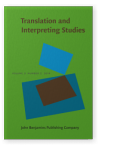A cross-cultural study of metaphoric imagery in Shakespeare’s Macbeth
Metaphor is an important literary device, and its translation poses the challenge of switching between different cultural, conceptual, and linguistic frames of reference. This study uses cross-cultural comparison to investigate the metaphoric imagery used in six translations of Shakespeare’s Macbeth into three languages: French, Italian, and Persian. To accomplish the aims of the study, metaphoric images in this play were identified in the source and target texts and then subjected to comparative analysis using Newmark’s categorization of strategies for translating metaphors. After analyzing the translations in the above-mentioned languages, it became apparent that all the translators, including the two Persian translators, tended to retain the same metaphoric images as in the source text. This is somewhat surprising given the greater linguistic and cultural distance between English and Persian. The findings suggest that the literal treatment of metaphors — and not their explicitation — may be a translation universal, at least in regard to canonical texts.
References
Alvarez, Antonia
1993 “
On Translating Metaphor.”
Meta 38 (3): 479–490.


Ashouri, Darius
1992 Translation of Macbeth into Persian. Tehran: Agah Publishing House.

Ahmadi, Abdolkarim
1957 Macbeth into Persian. Tehran: Andisheh Press.

Barcelona Sánchez, Antonio
1997 “
Clarifying and Applying the Notions of Metaphor and Metonymy within Cognitive Linguistics.”
Atlantis 19 (1): 21–48.

Charteris-Black, Jonathan, and Timothy. Ennis
2001 “
A Comparative Study of Metaphor in Spanish and English Financial Reporting.”
English for Specific Purposes 20 (3): 249–266.


Dobrzynska, Teresa
1995 “
Translating Metaphor: Problems of Meaning.”
Journal of Pragmatics 24 (6): 595–604.


Forceville, Charles
2005 “
Visual Representations of the Idealized Cognitive Model of Anger in the Asterix Album La Zizanie.”
Journal of Pragmatics 37 (1): 69–88.


Fritz, Gerd
1998 HistorischeSemantik [
Historical semantics]. Stuttgart and Weimar, Germany: Metzler.

Fuertes Olivera, P.A
1998.“
Metaphor and Translation: A Case Study in the Field of Economics.” In
La traducción: orientaciones lingüísticas y culturales, ed. by
Purification Nistal Fernández, and
J.M. Bravo Gozalo 56 (2), 79–95. Valladolid: Universidad de Valladolid, Servicio de Apoyo a la enseñanza.

Fuertes Olivera, Pedro A., and Isabel Pizarro-Sánchez
Gentzler, Edwin
2000 “
Translating Metaphor: Beyond the Western Tradition.” In
Beyond the Western Tradition, ed. by
Marilyn Gaddis Rose, 11–24. Binghamton: State University Press of New York.

Halliday, Michael Alexander Kirkwood
1985 An Introduction to Functional Grammar. London, Baltimore and Melbourne: Edward Arnold.

Hugo, François V
1880 Shakespeare en Français Texte Intégrale. Paris: Gründ Publishing House.

Ibarretxe-Antuñano, I., and Brigette Nerlich
2000 “
Review of Metáfora y Conocimiento. Pedro José ChamizoDomínguez, Málaga, Spain: Analecta Malacitana, 1998.”
Metaphor and Symbol 15 (1): 109–116.


Kövecses, Zoltán
2002 Metaphor: A Practical Introduction. New York: Oxford University Press.

Lakoff, George, and Mark Johnson
1980 Metaphors We Live By. Chicago: University of Chicago Press.

Newmark, Peter
1988 A Textbook of Translation. New York: Prentice-Hall International Press.

Praz, Mario
1965 Shakespeare Tutte le Opere. Trans.
Mario Praz. Florence: Sansoni.

Raponi, Goffredo
1960 Traduzione di Macbeth. London and Glasgow: Collins.

van den Broek, Raymond
1981 “
The Limits of Translatability Exemplified by Metaphor Translation.”
Poetics Today 2 (4): 73–87.


Spurgeon, Caroline
1968 Shakespeare’s Imagery and What it Tells Us. Cambridge: Cambridge University Press.

Cited by
Cited by 3 other publications
Liu, Yufeng & Dechao Li
2024.
Multimodal metaphor (re)framing: a critical analysis of the promotional image of China’s Hubei Province in the post-pandemic era on new media.
Social Semiotics 34:2
► pp. 269 ff.

This list is based on CrossRef data as of 18 june 2024. Please note that it may not be complete. Sources presented here have been supplied by the respective publishers.
Any errors therein should be reported to them.
